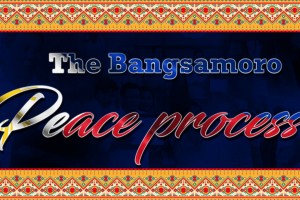
MANILA — In less than two weeks from now, the much-fought-for Bangsamoro Organic Law (BOL) will finally come to fruition after a decade and three administrations of work put into it.
We call it the best step towards peace. And to start building peace in a community where corruption, conflict, and instability thrived for generations is a historical mark — ending an era of war and misunderstanding of the Moros in Mindanao.
Following a timeline that starts on its creation, let us remember all the important points of the Bangsamoro Law.
2008
July
During the term of former president Gloria Macapagal-Arroyo, the government and the Moro Islamic Liberation Front announced the creation of the Memorandum of Agreement-Ancestral Domain (MOA-AD), a document that outlined the creation of a Bangsamoro Juridical Entity with its own police, military, and judicial systems.
The MOA-AD proposed the creation of an autonomous political region.
October
After issuing a temporary restraining order on the signing of the MOA-AD, the Supreme Court declared the agreement unconstitutional and illegal.
2012
October — The government and the MILF released the Framework of Agreement on the Bangsamoro, paving the way for a new autonomous political entity — the Bangsamoro.
It was signed in ceremonies held in Malacañan Palace, witnessed by President Benigno S. Aquino III, Malaysian Prime Minister Dato’ Sri Mohd Najib Bin Tun Haji Abdul Razak, and other dignitaries.
2014
March 27 — The Comprehensive Agreement on the Bangsamoro (CAB) was signed in a ceremony, thus concluding 17 years of negotiations between the Government of the Philippines and the Moro Islamic Liberation Front.
2015
January 25 — In a mission to capture Malaysian terrorist Zulkifli bin Hir, alias “Marwan”, some 44 members of the police Special Action Force died in an encounter against the MILF and Bangsamoro Islamic Freedom Fighters in Mamasapano, Maguindanao. The botched operation also claimed the lives of 18 rebels and five civilians.
May 20 — With a 50-17 vote and one abstention, the House Ad Hoc Committee on the BBL approved the draft and the committee report of the proposed measure, which was then renamed the Basic Law for the Bangsamoro Autonomous Region (BLBAR).
August 11 — Former Senator Bongbong Marcos said 17 senators had signed the committee report on the substitute bill on the BBL, which was then renamed the Bangsamoro Autonomous Region Law.
December 8 — Aquino met with lawmakers to discuss what would become of the BBL, as the measure had been pending in the House plenary for second reading since September due to lack of quorum.
The 16th Congress eventually failed to pass the BBL when it adjourned in February 2016.
2016
June 30 — The first Philippine president from Mindanao, Rodrigo Duterte, assumed office. His campaign heavily promised on bringing peace in the war-torn area through the passage of BBL.
2017
July 19 — Duterte met with MNLF founder and leader Nur Misuari to discuss the BBL and the shift to federalism after the group rejected the passage due to complicated issues.
2018
January 25 — Senators Miguel Zubiri, Sonny Angara, JV Ejercito, and Risa Hontiveros conducted the first public consultation in Mindanao on the proposed BBL, which took place in Cotabato City in Maguindanao.
May 30-31 — Voting 227-11-2, the House of Representatives approved its version of the proposed BBL, or House Bill 6475, on third and final reading on May 30. The Senate, after discussing provisions of the bill for about 10 hours, voted 21-0 early May 31 to approve its version, Senate Bill 1717.
July 18 —The bicameral committee approved the final version of the BBL, now called the Organic Law for the Bangsamoro Autonomous Region in Muslim Mindanao (OLBARMM).
It will be parliamentary-democratic, a first in the country. It will be headed by the regional leader called the Chief Minister, who will preside over an 80-member parliament.
July 24 — The House of Representatives, now at the helm of new House Speaker Rep. Gloria Macapagal Arroyo, ratified the OLBARMM.
2019
January 21 — Declared as a special non-working holiday by the president, the residents in the ARMM and the cities of Isabela and Cotabato votes in the plebiscite for the BOL.
February 6 —Another plebiscite will be held in Lanao del Norte, Aleosan, Carmen, Kabacan, Midsayap, Pikit and Pigkayawan towns in North Cotabato and other areas that sought inclusion in the proposed BARMM.
Malacañang has yet to declare Feb. 6 a special non-working day. (Data sourced from officialgazette.gov.ph, and CNN Philippines/PNA)